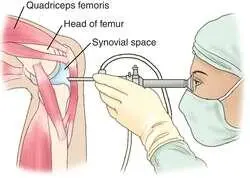Christian Horak - The CommFlow System
Здесь есть возможность читать онлайн «Christian Horak - The CommFlow System» — ознакомительный отрывок электронной книги совершенно бесплатно, а после прочтения отрывка купить полную версию. В некоторых случаях можно слушать аудио, скачать через торрент в формате fb2 и присутствует краткое содержание. Жанр: unrecognised, на немецком языке. Описание произведения, (предисловие) а так же отзывы посетителей доступны на портале библиотеки ЛибКат.
- Название:The CommFlow System
- Автор:
- Жанр:
- Год:неизвестен
- ISBN:нет данных
- Рейтинг книги:5 / 5. Голосов: 1
-
Избранное:Добавить в избранное
- Отзывы:
-
Ваша оценка:
- 100
- 1
- 2
- 3
- 4
- 5
The CommFlow System: краткое содержание, описание и аннотация
Предлагаем к чтению аннотацию, описание, краткое содержание или предисловие (зависит от того, что написал сам автор книги «The CommFlow System»). Если вы не нашли необходимую информацию о книге — напишите в комментариях, мы постараемся отыскать её.
The CommFlow System — читать онлайн ознакомительный отрывок
Ниже представлен текст книги, разбитый по страницам. Система сохранения места последней прочитанной страницы, позволяет с удобством читать онлайн бесплатно книгу «The CommFlow System», без необходимости каждый раз заново искать на чём Вы остановились. Поставьте закладку, и сможете в любой момент перейти на страницу, на которой закончили чтение.
Интервал:
Закладка:
Christian Horak
The CommFlow System
A structured approach to understanding and improving interpersonal communication
Dieses ebook wurde erstellt bei

Inhaltsverzeichnis
Titel Christian Horak The CommFlow System A structured approach to understanding and improving interpersonal communication Dieses ebook wurde erstellt bei
Contents Contents [ The CommFlowsystem ] A structured approach to understanding and improving interpersonal communication
Introduction: Communication is like keyhole surgery (you should be trained before you try it)
Chapter 1: The brain is stupid - Don't be fooled by it
Chapter 2: The social brain. A simple way to understand how to structure an interaction for success
Chapter 3: The Seven keys to communication flow. (Becoming a communication black belt)
Chapter 4: Community
Chapter 5: Intent
Chapter 6: Coherence
Chapter 7: Clarity
Chapter 8: Feedback
Chapter 9: Flexibility
Chapter 10: Influence
Chapter 11: How to get started
Chapter 12: The First Key: Community
Chapter 13: The Second Key: Intent
Chapter 14: The Third Key: Coherence
Chapter 15: The Fourth Key: Clarity
Chapter 16: The Fifth Key: Feedback
Chapter 17: The Sixth Key: Flexibility
Chapter 18: The Seventh Key: Influence
Appendix A: Some key things to know about the science of communication & the brain
Appendix B: The 20-minute body language survival guide
Appendix C: Culture Basics
Appendix D: Managing Self-Talk or "Dealing with the drama in your head"
Impressum neobooks
Contents
| [ The CommFlowsystem ] |
| A structured approach to understanding and improving interpersonal communication |
Introduction: Communication is like keyhole surgery (you should be trained before you try it)
Today's advanced medical techniques include a concept called "keyhole surgery". The principle is simple: The surgeon makes a tiny cut in the patient's skin, inserts a medical tool, performs the surgery - for example working on a patella in an athlete's knee - removes the tool and stitches or even glues up the small incision. The advantages are that the surgery can be done more quickly, the wound is more manageable and heals more quickly.

What does this have to do with communication? How can this be even remotely related to the world of words, language, logic, concepts and culture?
I thought of this analogy recently when thinking about how communication between two individuals actually works.
In order for any communication to work at all, both persons have to share a lot of things in common; a common language for once! But a common language is not enough. Elements of a common culture are required as well, as is a shared context for the communication.
Only when language, culture, context and quite a number of other things line up, a coherent communications flow can begin. One could say we have "Comm-Unity" and a compatible "model" of the world.
If, however, a shared model is not in place, when "Comm-Unity" has NOT been established, one can see a lot of misunderstanding. And while these misunderstandings are often funny, they are more often very frustrating and sometimes even tragic.
Again, you might say, what does this have to do with "keyhole surgery"?
The analogy is that - when we communicate -, we are actually opening a "keyhole" into the “World Model” of the person we are attempting to communicate with. We are "inserting" the "surgical tools" of our communication (words, body language, speed and tone of voice, outer appearance, pheromones, choice of setting, mode of communication) into the “World Model” of the other person. But we don't really see the "inside" of the other person. We can't. All we see is the response we get, and that has to be interpreted by us using our own World Model. In order for any communication to flow, we have to make a lot of assumptions on the mental "anatomy" of the communications partner. And these assumptions, and sometimes a lack of awareness of the complete scope of our messages are the reasons that so much communication leads to misunderstandings.
So, that is how "keyhole surgery" and communications can be compared. The huge difference between keyhole surgery and communication (apart from the fact that it is probably not a very strong analogy) is that it is usually performed by highly trained surgeons who spend years and years in university, and many more years practicing as residents in a hospital before they get to cut anyone open. The risks are simply too high, keyhole or not, a lot of things can go wrong and we want our surgeons to be the best.
With communication, however, most people are untrained and unaware of how communication even works! And therefore, many of us are quite unsuccessful in getting our points across successfully in many situations.
This book is intended to capture essential ideas about the art and science of communication. To create a Communications Flow System (CommFlowSystem) of training that provides a structured approach to become a master of communication at all levels.
The fundamental axioms of the CommFlowSystem will be based on the following categories:
(1) Community …
how to establish common ground / rapport with the target audience or culture earning the right to establish a flow.
(2) Intent …
how to be clear on the purpose and intended outcome(s) of the communication, (inform, inspire, entertain, educate, call to action, ...).
(3) Coherence …
how to apply ALL means of communication available (body language, setting, medium, language, tools, logic, continuity, etc.) in a consistent fashion.
(4) Feedback
how to solicit and read feedback at all levels (important since the meaning of any communication is determined by the feedback you obtain).
(5) Flexibility
how to adjust to different mental models and approaches to maintain flexibility, respond to feedback and avoid disrupting the flow
(6) Influence
how to apply an understanding of the mind to influence the flow in a certain direction (calming, persuading, objection handling, etc.)
(7) Clarity
how to achieve utmost simplicity and how to remove confusion, clutter and waste in your communication
The main goal of this book is to distill my personal experience as well as 100's of books read into an essential guide that will help anyone to become a better communicator.
Chapter 1: The brain is stupid - Don't be fooled by it
Our brain is a very advanced machine. It has evolved over millions of years. It operates at amazing speed and can store and retrieve huge amounts of information. The brain justly gets a lot of praise for being the main driving factor for putting our species on top of the food chain. Well done, brain! But in spite of its great performance, the brain is essentially "stupid". Just like a digital computer, the brain is essentially a sophisticated data processing machine and will faithfully execute any programs that are fed into it, through nature or nurture.
"Well", you are probably thinking, "I am not sure I agree with this! How can the brain, the main seat of our intelligence be stupid? What is this guy thinking?" Of course, it’s a gross exaggeration to get your attention. But let me explain.
Читать дальшеИнтервал:
Закладка:
Похожие книги на «The CommFlow System»
Представляем Вашему вниманию похожие книги на «The CommFlow System» списком для выбора. Мы отобрали схожую по названию и смыслу литературу в надежде предоставить читателям больше вариантов отыскать новые, интересные, ещё непрочитанные произведения.
Обсуждение, отзывы о книге «The CommFlow System» и просто собственные мнения читателей. Оставьте ваши комментарии, напишите, что Вы думаете о произведении, его смысле или главных героях. Укажите что конкретно понравилось, а что нет, и почему Вы так считаете.












